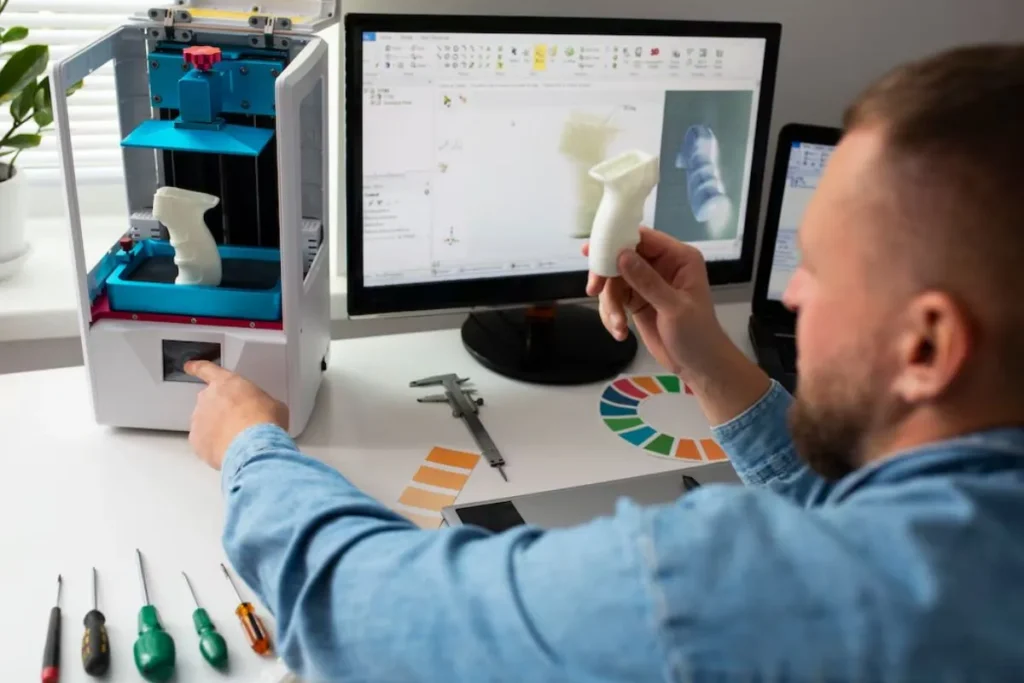Algorithmic Solutions for Reducing 3D Printing Time have revolutionized the additive manufacturing process. Embracing advanced algorithms can significantly boost efficiency. From slicing to optimizing printer paths, these innovations are game-changers.
These solutions not only speed up the printing process but also enhance accuracy. By minimizing movement and refining paths, the print quality is improved. Additionally, they reduce wear and tear on the machinery, extending the printer’s lifespan.
Implementing such algorithms can lead to substantial cost savings. This makes the technology more accessible and practical for various industries. The overall impact is a more sustainable and efficient production process.
Key Algorithmic Strategies for Speeding Up 3D Printing
Understanding and implementing algorithmic solutions is crucial. These strategies not only cut down on printing time but also enhance print quality. Here are the key techniques:
1. Optimized Slicing Algorithms
Slicing software translates 3D models into printable layers. Advanced slicing algorithms can reduce the printing time. By optimizing layer height and path planning, you can achieve faster prints without sacrificing quality.
Layer Height Optimization
A crucial aspect of slicing is layer height. Thicker layers print faster, but thinner layers yield better details. Balancing these can lead to both quality and efficiency.
Adaptive Layering
Adaptive layering adjusts layer heights dynamically. This ensures lower printing time in less detailed areas and finer layers where needed.
2. Smart Infill Patterns
Choosing the right infill pattern significantly affects printing time. Honeycomb and triangular patterns, for example, are efficient and sturdy.
Low-Density Infill
Low-density infill saves material and reduces printing time. Use this for non-structural components where strength is less critical.
Variable Density Infill
Incorporate areas of different infill densities. This optimizes the strength-to-weight ratio and minimizes the print duration.
3. Path Optimization Software
Path optimization algorithms are vital for reducing print times. These algorithms streamline the printer’s movements, reducing unnecessary pauses and motions.
Shortest Path Calculation
Algorithms that calculate the shortest path between points can cut down printing time. Less travel means quicker prints.
Non-Planar Printing
Incorporating non-planar paths can also reduce time. This method adjusts the printer’s movements to build prints more efficiently.
Incorporating AI in 3D Printing
AI-powered solutions are increasingly popular. Machine learning algorithms analyze print data and make real-time adjustments, enhancing both speed and quality.
1. Dynamic Adjustment Algorithms
AI allows for real-time printer adjustments. It dynamically alters settings based on real-time data, optimizing speed and print quality.
Predictive Analytics
Using historical data, predictive algorithms anticipate issues. This reduces downtime and enhances overall printing efficiency.
Real-Time Feedback Loops
Feedback loops enable the system to self-correct. By analyzing errors as they occur, the algorithm makes immediate adjustments to improve print quality.
2. Machine Learning for Parameter Tuning
Machine learning algorithms can optimize print parameters. By learning from each print, these systems continually refine settings for optimal performance.
Customized Printing Profiles
Machine learning develops specific profiles for different materials and models. This ensures the best balance between speed and quality.
Auto-Calibration Systems
Automatic calibration ensures the printer operates at peak efficiency. Machine learning algorithms fine-tune the calibration process for faster setups.
Practical Tips for Faster 3D Printing
While algorithmic solutions are powerful, practical tips can further reduce printing time. Implementing these tips will complement advanced software techniques.
1. Preheat Your Printer
Preheating the printer saves time by reducing the wait for the nozzle to reach the printing temperature.
Preheat Routine
Create a routine to preheat the printer before starting the print job. This simple step can shave minutes off each print.
Consistent Temperature
Ensure consistent temperature settings by regularly maintaining your printer. Well-calibrated temperatures improve print speed and quality.
2. Use Efficient Print Settings
Adjusting print settings like speed, infill, and layer height can drastically cut down on printing time.
Increase Print Speed
Increasing the print speed can shorten print times. However, experiment to find the optimal speed that doesn’t compromise quality.
Adjust Layer Heights
Thicker layers print faster. Adjust designs to use thicker layers where fine detail is not necessary.
Optimize Wall Thickness
Reducing wall thickness can also speed up the print process. Ensure the structural integrity remains intact.
Future Trends in 3D Printing Speed Optimization
Technologies continue to evolve. Future trends promise even greater reductions in 3D printing times through even more innovative algorithmic solutions.
1. Multi-Material and Multi-Head Printing
Advances in multi-material and multi-head printing will further streamline processes. These innovations allow simultaneous printing of different materials, reducing time.
Multi-Material Integration
Integrating multiple materials in a single printhead reduces changeovers. This speeds up the printing process.
Simultaneous Printing
Multiple heads printing at once drastically cuts down on printing durations. It’s a solution gaining traction for large-scale production.
2. High-Speed Resin and Powder Bed Fusion
High-speed resin and powder bed fusion technologies are emerging. They offer faster print times with higher precision.
Resin Printing
High-speed resins cure faster, reducing print times. Innovations in resin chemistry are key to these advancements.
Powder Bed Fusion
High-speed powder bed fusion methods improve both speed and accuracy. Future developments in this area will push 3D printing boundaries.
Advanced Software Solutions for 3D Printing
Advanced software is integral to faster 3D printing. Innovations in software solutions continue to drive improvements in printing speed and efficiency.
1. Advanced Slicing Software
Improved slicing software offers more control over print parameters. This precision helps reduce printing time while maintaining quality.
Slicing Customization
Customizable slicing settings allow fine-tuning for specific projects. This leads to optimal printing speeds.
Slicing Speeds
Newer software versions focus on slicing speed improvements. Faster slicing means quicker starts for all projects.
2. Cloud-Based Printing Solutions
Cloud-based solutions bring significant efficiencies. These platforms offer real-time monitoring and adjustment capabilities.
Real-Time Adjustments
Cloud platforms allow for instant adjustments from anywhere. This flexibility reduces downtime and enhances productivity.
Data Analytics
Leveraging cloud data analytics optimizes the printing process. Insights gained from data help refine printing algorithms continuously.
Summing Up Algorithmic Solutions for Reducing 3D Printing Time
Incorporating advanced algorithms is essential for faster 3D printing. From optimized slicing and smart infill patterns to AI-powered adjustments, the techniques are diverse. These solutions bring not only speed but also enhance print quality.
Investing in these technologies and following practical tips will yield substantial benefits. By keeping up with emerging trends, you ensure your 3D printing setup remains efficient and cutting-edge.
Explore, implement, and stay ahead. Invest in innovative algorithmic solutions for reducing 3D printing time.
Frequently Asked Questions
How can slicing algorithms reduce 3D printing time?
Slicing algorithms optimize layer height and path planning, which speeds up the printing process while maintaining the desired print quality.
What are the benefits of using adaptive layering?
Adaptive layering dynamically adjusts layer heights, reducing printing time in less detailed areas and providing finer detail where needed.
How does AI enhance 3D printing efficiency?
AI uses real-time data to make dynamic adjustments, optimize parameters, and predict issues, thereby improving speed and print quality.
Why is multi-material printing important for reducing print time?
Multi-material printing reduces changeovers, allowing simultaneous printing of different materials, which speeds up the overall process.
Can cloud-based printing solutions improve 3D print speeds?
Yes, cloud-based solutions offer real-time monitoring and adjustment capabilities, reducing downtime and optimizing the printing process continuously.



